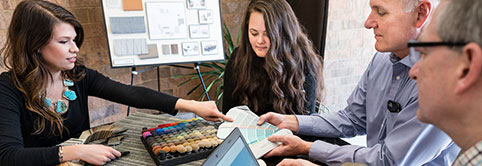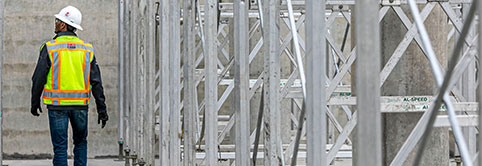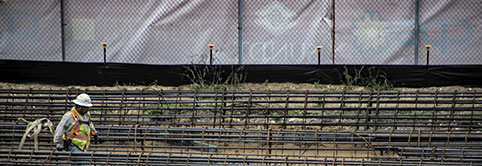Work Clusters
Introduction to Work Clusters
For anyone who has worked in the built environment, it’s no secret that construction projects can be incredibly complex – sometimes involving more than 50 different companies working together to complete a single project.
Whether a project is big or small in scope, each one involves a large number of individuals and decision-makers, each with their own skillsets, agendas, goals, priorities, and points of view.
The goal of Target Value Delivery is to align these various groups under one united set of interests and goals, breaking down silos and preventing conflict – which can waste valuable time, money, and resources.
But even once these various teams are aligned contractually, it’s important to continually reinforce the collaborative mindset throughout the project’s completion.
One way to promote a productive, collaborative working environment is through the careful and intentional organization of work teams and their responsibilities.
By building work clusters, which include representative decision-makers from every team involved in a work project who focus on the Conditions of Satisfaction and project value proposition to drive those decisions, teams can advance work with a complete understanding of the impact each choice has on individuals and the project as a whole.

What Are Work Clusters?
Work clusters – sometimes referred to as Project Integration Teams (PIT) or Cluster Groups – are made of groups of individuals from different teams on a project, all working together towards a shared purpose. Work clusters help simplify complex projects, fostering rapid learning and solution prototyping. Clusters promote sharing of cross-functional knowledge, aiding in collaborative problem-solving and decision-making. This approach leads to better-informed, timely decisions, reducing the need for extensive iterations.
Benefits of Using Work Clusters
1. Simplification
Construction projects are extremely complex and involved, with hundreds of variables to consider including the Conditions of Satisfaction, budgets, timelines, team capabilities, and more. Work clusters simplify problems by allowing representatives from each team to focus their efforts on one specific area of the project. This compartmentalization makes work much simpler.
2. Efficiency
When a smaller group of people is able to focus on a specific task, work gets completed far more efficiently. Each work cluster gets to “own” its specific piece of the project, allowing its team members to exert complete control over their outcome to produce the most value.
3. Representation
One of the key benefits of utilizing work clusters is that they necessarily include representatives from each group or organization working on a project. This ensures that decisions are made with total insight and the full perspective of every impacted party, reducing conflict and rework.
4. Flexibility
Work clusters can be formed and disbanded quickly as needed, and should only be formed to attack specific needs. Clusters can easily swap in new members as required, and can reform again later if the need arises.
Work Cluster Organization
Work clusters can be formed at any time throughout the duration of a construction project. Clusters are formed to fulfill a specific project need or to come to a critical decision.
One common use of work clusters is during the design phase, where teams form clusters to support a set-based design methodology. When this is applied, each cluster is assigned to a possible design option, developing each design in tandem with the others while the feasibility of each option is being considered.
How frequently work clusters are needed in your project likely depends on how big and complex your project is – the more complex and involved, the more beneficial a work cluster is to fulfill a project need.
Each cluster group must have a defined leadership structure, with clearly assigned roles:
Leader
This person is the leader of innovation. The leader does not necessarily need to be the person with the most expertise or seniority, but needs to be the person who can lead and challenge the team to innovate.
Administrator
This person is the manager of the innovation team. They keep the team on task and focused. They also serve as the reporter and facilitator at the project team level.
Discipline Representatives
Every other member of the work cluster falls into this category. It is vital for cluster groups to be multi-disciplinary – each cluster should have representation from the owners, end users, architects/engineers, GC/CMs, specialty trade contractors, and all other parties involved in your project. The expertise of these individuals are invaluable.
Even though they don’t hold leadership titles within the cluster, these people are leaders of their discipline and should not be afraid to take charge of initiatives when necessary.
Learn the Last Planner System®
The Lean Construction Institute is committed to transforming the design and construction industry by providing Lean educational resources, conducting field research, and facilitating local and national Lean events. Explore the supplementary resources below to further your understanding of The Last Planner System.
Lean Assessments
How strong is your Lean knowledge? Take a Lean assessment to determine your current state so you have a baseline for improvement. Lean assessments are available for individuals, teams, and organizations alike. Whether you’re new to Lean or are an experienced Lean practitioner, Lean assessments are a great way to get started at LCI!
TAKE ASSESSMENTMore Lean Topics
From 5s to IPD, explore popular Lean design and construction topics below.




